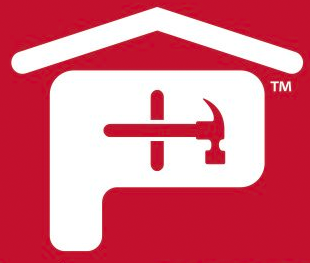"Continuous Insulation" Key Component to Whole Building Approach
Bethesda, MD, November 21, 2010 – In late October, local and state building code officials adopted improvements to the 2012 International Energy Conservation Code (IECC) that will achieve a 30 percent increase in energy savings in residential and commercial buildings as compared to the 2006 code. This represents the single largest efficiency increase in the history of the model energy code.
“The 500 plus state, regional and national members of the ICC are to be commended for their exhaustive efforts to improve the performance of our nation’s buildings,” noted Jared Blum, President of the Polyisocyanurate Insulation Manufacturers Association. “The efficiency improvements adopted by the ICC incorporate readily available technologies such as insulation and we are particularly pleased to see the emphasis on building envelope requirements that include continuous insulation.”
In both residential and commercial construction continuous insulation (ci) – wrapping the exterior wall in a continuous layer of rigid foam insulation around the studs and the cavity - offers the only way to block thermal bridging. It also results in walls with a higher R-value than using batt insulation alone. The benefits of continuous insulation are a reduction in heat loss, prevention of mold and mildew accumulation in the wall and better protection against water intrusion.
The resulting residential changes include the following:
- A mandatory air infiltration test in all homes to ensure building envelope efficiency
- A requirement that ducts be tested to a tighter duct leakage standard
- An increase in stringency for insulation and glazing efficiency requirements
- A set of options to solve the problem of "stranding"–and therefore wasting–heated water: keeping pipes "short and skinny," or insulating them to avoid waste
- The elimination of a former duplication of model energy codes between the IECC and the International
Residential Code, streamlining the process into a singular, efficient path to residential compliance
The specific increases to residential wall R-values are as follows:
|
CLIMATE ZONE |
ASHRAE 90.1 -2007/IECC 2009 |
IECC 2012 |
|
1 |
13 |
13 + 3.8 ci or 20 |
|
2 |
13 |
13 + 3.8 ci or 20 |
|
3 |
13 |
13 + 3.8 ci or 20 |
|
4 |
13 |
13 + 3.8 ci or 20 |
|
5 |
13 + 3.8 ci |
13 + 7.5 ci |
|
6 |
13 + 7.5 ci |
13 + 7.5 ci |
|
7 |
13 + 7.5 ci |
13 + 7.5 ci |
|
8 |
13 + 15.6 ci |
13 + 15.6 ci |
|
Status |
“Current Code” |
“Next Code” |
The resulting commercial changes include:
- Comprehensive revisions to IECC's Chapter 5, including the compliance option to choose between high performance lighting, high performance HVAC equipment, or onsite renewable power generation
- More efficient air leakage requirements by requiring continuous air barriers for the building envelope
- A commissioning requirement for HVAC systems
- Increased efficiency of the opaque thermal envelope provisions
- Increased fenestration efficiency
- Mandated automatic daylighting controls for buildings with a window-to-wall ratio over 30%
- A requirement for skylights and daylighting controls for spaces over 10,000 ft2 in certain building types
- Added efficiency requirements for cooling towers
- Increased minimum efficiency requirements for certain HVAC equipment
- Increased HVAC piping insulation provisions
The chart outlining changes to commercial building envelope requirements is much more extensive and can be found at polyiso.org. When reviewing the chart note the emphasis on the use of continuous insulation.
“The R-values requirements for roofs also improved in many of the climate zones, adding to the importance of high performance roof systems,” added Blum. “This is yet another step forward in insuring that we as a nation reduce our energy consumption, which in turn will help to stabilize or even decrease energy costs to businesses and homeowners.”
The next step will be for states and localities to adopt the 2012 IECC.



 Gear!
Gear! PRO LOGIN
PRO LOGIN